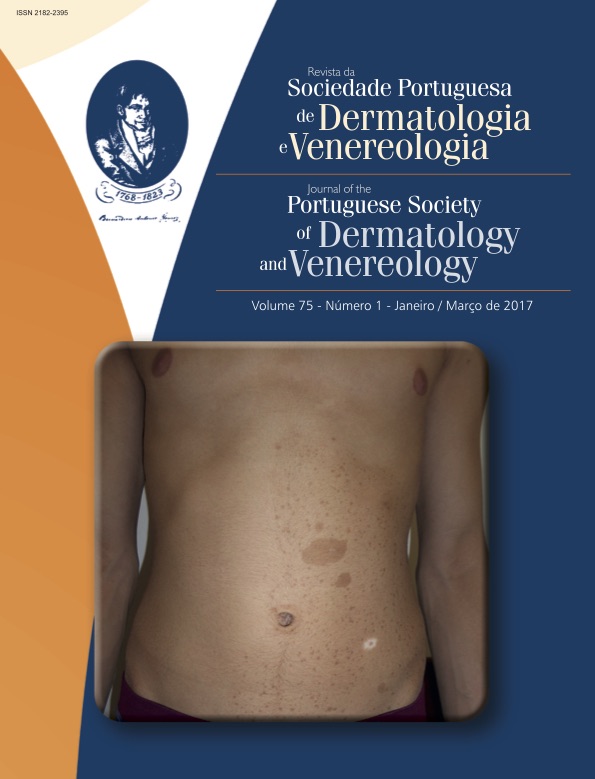High Incidence of Sexually Transmitted Infections in Patients with HIV-Infection
Abstract
Introduction: Sexual transmitted infections (STI) are an important health problem and increase the risk for acquisition and transmission of HIV. We aimed to identify STIs diagnosed in patients with known human immunodeficiency virus (HIV) infection and in newly diagnosed ones.
Methods: Retrospective analysis of medical charts of individuals attending a specialized STI Clinic from 2009 to 2013.
Results: A total of 680 patients were included, accounting for 8% of the patients observed during the study period. The majority (638, 92%) were male and men who have sex with men (MSM) (489, 72%). Almost half (304, 45%) were migrants. Overall, 270 (40%) patients were diagnosed with at least one STI, syphilis was the most common (123, 18%), followed by Chlamydia trachomatis (46, 7%), Neisseria gonorrhoeae infection (42, 6%) and genital warts (32, 5%). Concerning HIV status, 329 (48%) patients had known infection and 351 (52%) were newly diagnosed during the study period. The newly diagnosed patients were significantly younger (37.3±9.7 vs 32.4± 9.5 years) and more frequently sought attention for screening. Past history of STIs, partner referral, symptoms and being diagnosed with at least one concomitant STI were significantly more common in previously known HIV patients.
Conclusion: At least one new STI (other than HIV) was diagnosed in 40% of the patients. This represents an important problem not only because concomitant STIs increase the risk of HIV acquisition (for the new diagnosed cases) but also because patient with known HIV infection maintain a high-risk behaviour pattern.
Downloads
References
Steen R, Wi TE, Kamali A, Ndowa F. Control of sexually
transmitted infections and prevention of HIV transmission:
mending a fractured paradigm. Bull World Health
Organ. 2009,87:858-65.
Kalichman SC, Cain D, Simbayi LC. Behavioral changes
associated with testing HIV-positive among sexually
transmitted infection clinic patients in Cape Town, South
Africa. Am J Public Health. 2010; 100:714-9.
Cohen MS. HIV and sexually transmitted diseases: lethal
synergy. Top HIV Med. 2004;12:104-7.
Cunha A, Santos R, Fernandes C, Rodrigues A, Cardoso
J. Doenças de transmissão sexual como diagnóstico
inicial de infecção VIH. Rev Soc Port Dermatol Venereol.
; 63:355-8.
Pereira B, Fernandes C, Nachiambo E, Santos R, Rodrigues
A, Cardoso J. Novas infecções sexualmente transmissíveis
em doentes seropositivos para o VIH. Rev Soc
Port Dermatol Venereol. 2006; 64:347-54.
Direcção Geral da Saúde. Infeção VIH, SIDA e tuberculose
em números – 2014. Programa Nacional para a
infeção VIH/SIDA. Lisboa: DGS; 2014.
Santo I, Azevedo J, Cardoso J. A consulta de doenças
sexualmente transmissíveis do Centro de Saúde da
Lapa. Caracterização da população utente e padrão
epidemiológico das IST. Rev Soc Port Dermatol Venereol.
; 65:383-94.
Ferreira O, Lisboa C, Magalhães Ramos F, Azevedo F. Sífilis
numa consulta de infecções sexualmente transmissíveis.
Rev Soc Port Dermatol Venereol. 2012;70:99-104.
Pereira B, Fernandes C, Nachiambo E, Santos R, Rodrigues
A, Cardoso J. Sífilis recente: padrão epidemiológico
da consulta de doenças sexualmente transmissíveis
do Hospital de Curry Cabral (2003-2005). Rev Soc Port
Dermatol Venereol. 2006; 64:355-9.
Arora P, Nagalkerke N, Jha P. A systematic review and
meta-analysis of risk factors for sexual transmission of
HIV in India. PLoS One. 2012; 7:e44094.
Lee PM, Ho KM. Risk factors associated with human immunodeficiency
virus (HIV) infection among attendees
of public sexually transmitted infection clinics in Hong
Kong: implications for HIV prevention. Hong Kong Med
J. 2008; 14:259-66.
Sarkar S, Shrimal A, Das J, Choudhury S. Pattern of sexually
transmitted infections: a profile from a sexually
transmitted infections clinic of a tertiary care hospital of
eastern India. Ann Med Health Sci Res. 2013; 3:206-9.
Johnson HL, Ghanem KG, Zenilman JM, Erbelding EJ.
Sexually transmitted infections and adverse pregnancy
outcomes among women attending inner city public
sexually transmitted diseases clinics. Sex Transm Dis.
; 38:167-71.
Diaz A, Junquera ML, Esteban V, Martínez B, Pueyo I,
Suarez J, Ureña et al. HIV/STI co-infection among men
who have sex with men in Spain. Euro Surveill. 2009;
pii: 19426.
Götz HM, van Rooijen MS, Vriens P, Op de Coul E,
Hamers M, Heijman T, et al. Initial evaluation of use of
an online partner notification tool for STI, called 'suggest
a test': a cross sectional pilot study. Sex Transm Infect.
; 90:195-200.
All articles in this journal are Open Access under the Creative Commons Attribution-NonCommercial 4.0 International License (CC BY-NC 4.0).








